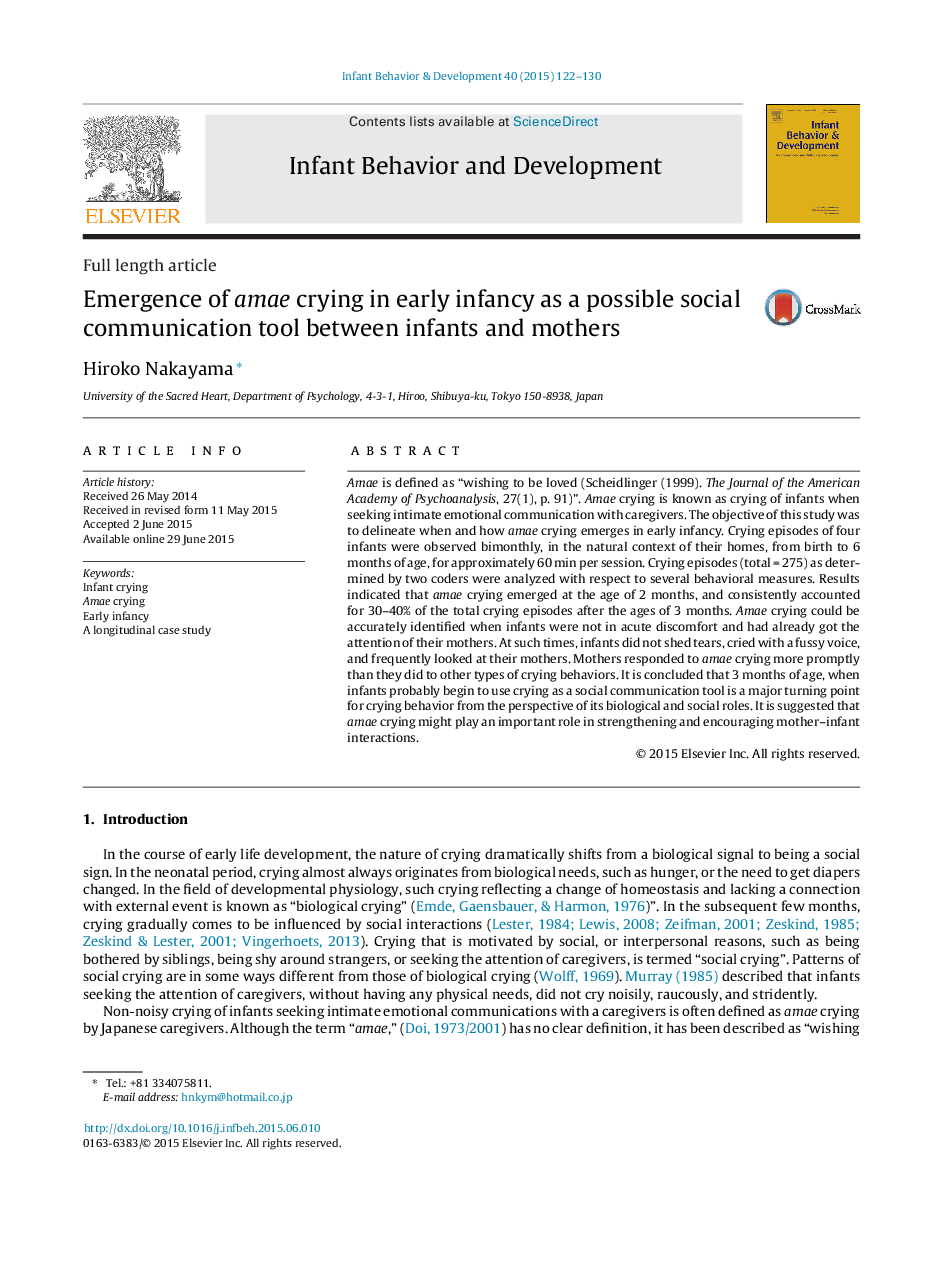| Article ID | Journal | Published Year | Pages | File Type |
|---|---|---|---|---|
| 7273324 | Infant Behavior and Development | 2015 | 9 Pages |
Abstract
Amae is defined as “wishing to be loved (Scheidlinger (1999). The Journal of the American Academy of Psychoanalysis, 27(1), p. 91)”. Amae crying is known as crying of infants when seeking intimate emotional communication with caregivers. The objective of this study was to delineate when and how amae crying emerges in early infancy. Crying episodes of four infants were observed bimonthly, in the natural context of their homes, from birth to 6 months of age, for approximately 60 min per session. Crying episodes (total = 275) as determined by two coders were analyzed with respect to several behavioral measures. Results indicated that amae crying emerged at the age of 2 months, and consistently accounted for 30-40% of the total crying episodes after the ages of 3 months. Amae crying could be accurately identified when infants were not in acute discomfort and had already got the attention of their mothers. At such times, infants did not shed tears, cried with a fussy voice, and frequently looked at their mothers. Mothers responded to amae crying more promptly than they did to other types of crying behaviors. It is concluded that 3 months of age, when infants probably begin to use crying as a social communication tool is a major turning point for crying behavior from the perspective of its biological and social roles. It is suggested that amae crying might play an important role in strengthening and encouraging mother-infant interactions.
Keywords
Related Topics
Life Sciences
Neuroscience
Behavioral Neuroscience
Authors
Hiroko Nakayama,
